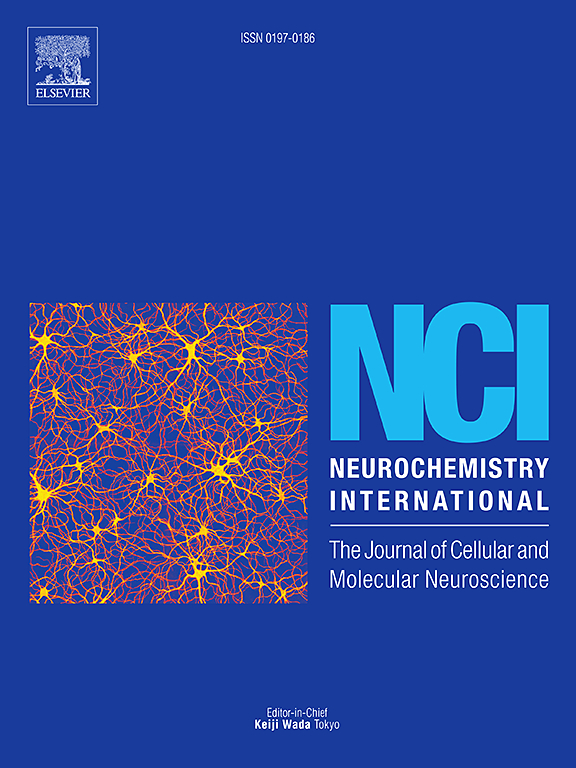Two phosphomimetic sites in the GABA transporter GAT1 C-terminus selectively regulate transporter interactions with distinct types of PDZ domains in vitro
IF 4
3区 医学
Q2 BIOCHEMISTRY & MOLECULAR BIOLOGY
引用次数: 0
Abstract
The GABA transporter GAT1 is a membrane protein that participates in GABA signalling in the brain and certain peripheral tissues. GAT1 contains a C-terminal PDZ motif (-A597Y598I599), previously classified as a type II (ΦXΦ) motif, where PDZ interaction should depend on non-phosphorylatable hydrophobic (Φ) residues at PDZ positions 0 (I599) and −2 (A597). We recently found that a GAT1 C-terminal peptide unconventionally binds to the PDZ1 domain of syntenin-1 and to the PDZ2 domain of PSD95 by using different PDZ interaction schemes, specifically 0,-1 and 0,-3, respectively. In this work, we used phosphomimetic amino acid mutagenesis to investigate the role of phosphorylatable amino acids in the GAT1 C-terminus in binding to these two domains. The mutagenesis and molecular docking experiments suggested that phosphorylation of tyrosine 598 at PDZ position −1 might affect the interaction with the PDZ1 domain of syntenin-1, but it did not affect the interaction with the PDZ2 domain of PSD95. On the other hand, a phosphomimetic but not a neutral mutation of the remote serine residues 592 and 594 at PDZ positions −7 and −5, respectively, affected the interaction of the GAT1 PDZ motif with the PDZ2 domain of PSD95, but not with the PDZ1 domain of syntenin-1. These findings suggest the existence of at least two domain-specific GAT1 PDZ interaction modes regulated by two distinct potentially phosphorylatable serine and tyrosine residues in the GAT1 C-terminus.
GABA转运体GAT1 c末端的两个拟磷位点选择性地调节转运体与不同类型PDZ结构域的相互作用。
GABA转运体GAT1是一种膜蛋白,参与GABA在大脑和某些外周组织中的信号传导。GAT1包含一个c端PDZ基序(-A597Y598I599),以前被归类为II型基序(ΦXΦ),其中PDZ相互作用应该依赖于PDZ位置0 (I599)和-2 (A597)上的非磷酸化疏水(Φ)残基。我们最近发现,GAT1 c端肽通过不同的PDZ相互作用方案(分别为0,-1和0,-3)非常规地结合到syntenin-1的PDZ1结构域和PSD95的PDZ2结构域。在这项工作中,我们使用拟磷氨基酸诱变来研究GAT1 c端可磷酸化氨基酸与这两个结构域结合的作用。诱变和分子对接实验表明,酪氨酸598在PDZ -1位置的磷酸化可能会影响其与syntenin-1的PDZ1结构域的相互作用,但不会影响其与PSD95的PDZ2结构域的相互作用。另一方面,位于PDZ -7和-5位置的远端丝氨酸残基592和594的同源性突变影响了GAT1 PDZ基序与PSD95的PDZ2结构域的相互作用,而不影响与syntenin-1的PDZ1结构域的相互作用。这些发现表明,至少存在两种特定于GAT1 PDZ结构域的相互作用模式,由GAT1 c端两种不同的潜在可磷酸化的丝氨酸和酪氨酸残基调节。
本文章由计算机程序翻译,如有差异,请以英文原文为准。
求助全文
约1分钟内获得全文
求助全文
来源期刊

Neurochemistry international
医学-神经科学
CiteScore
8.40
自引率
2.40%
发文量
128
审稿时长
37 days
期刊介绍:
Neurochemistry International is devoted to the rapid publication of outstanding original articles and timely reviews in neurochemistry. Manuscripts on a broad range of topics will be considered, including molecular and cellular neurochemistry, neuropharmacology and genetic aspects of CNS function, neuroimmunology, metabolism as well as the neurochemistry of neurological and psychiatric disorders of the CNS.
 求助内容:
求助内容: 应助结果提醒方式:
应助结果提醒方式:


